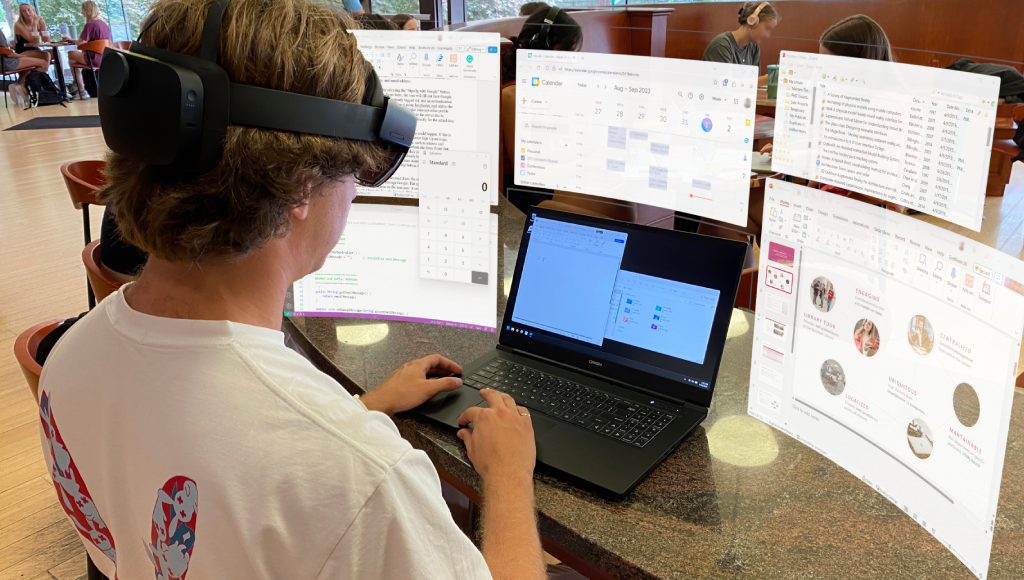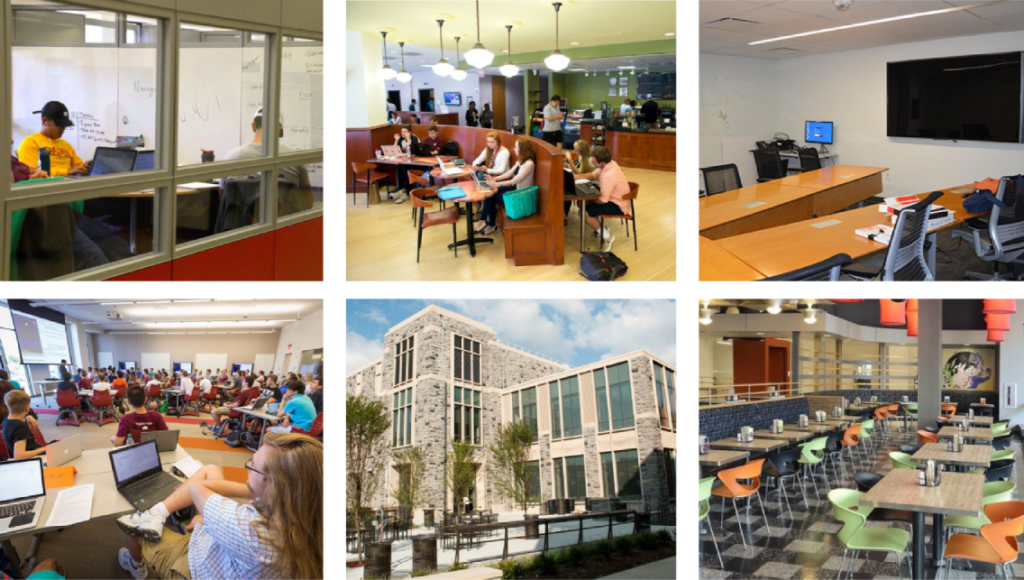
Mobile workers have limited access to display infrastructure while working on remote settings. While permanent office settings can support one or more monitors with large screen space, workers in remote settings are often reliant on the portable devices available to them at the time, such as laptops, tablets, and smartphones. Existing research has shown that virtual displays are feasible with current technology although they do not perform as well as a physical multi-monitor setup would. They have been shown to provide important advantages over a laptop with a single screen by eliminating context switches and allowing head and eye glances. They further support a unified working model where the same display settings could be used across different settings, reducing fragmentation in switching between the office and remote work. However, there are certain aspects that still need to be investigated and factored in when designing such interfaces.

In this project, we conducted two exploratory user studies to evaluate the user experience of performing productivity tasks using a hybrid condition in AR. We added a transparent canvas display around a common laptop monitor, allowing windows to be dragged “out of the monitor” without bezels or sub-divisions. We then deployed it on settings across the Virginia Tech campus, each with varying characteristics. From these sessions, we obtained qualitative data that demonstrate the benefits and challenges of deploying such systems, and how to take those into consideration while designing virtual display interfaces for use in remote settings.
Journal Articles
Working in Extended Reality in the Wild: Worker and Bystander Experiences of XR Virtual Displays in Public Real-World Settings Journal Article
In: IEEE Transactions on Visualization and Computer Graphics, pp. 1-17, 2025.
Proceedings Articles
Virtual Displays for Knowledge Work: Extending or Replacing Physical Monitors for More Flexibility and Screen Space Proceedings Article Forthcoming
In: 2024 IEEE Conference on Virtual Reality and 3D User Interfaces Abstracts and Workshops (VRW), pp. 2 pages, Forthcoming.
